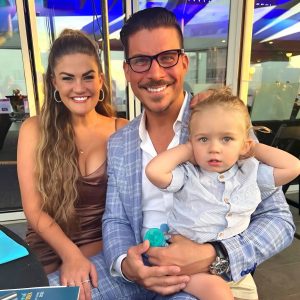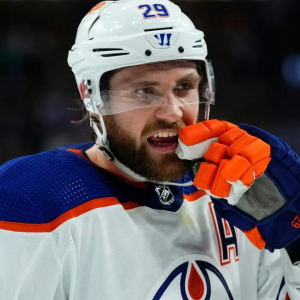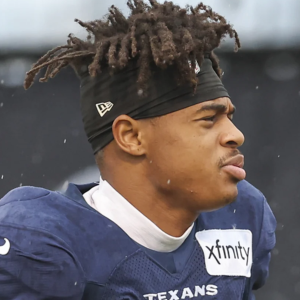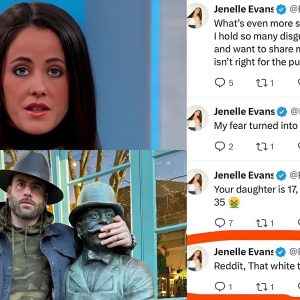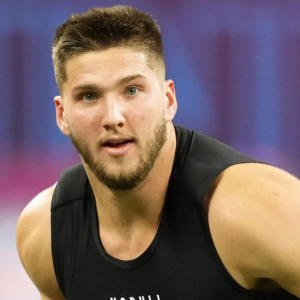Succession was an HBO series that ran from 2018 to 2023 and starred Brian Cox and Matthew McFadyen, among others. During its time on the air, Succession was nominated for a staggering 75 Primetime Emmy Awards and won 19 of them.
This article doesn’t have anything to do with the show Succession, aside from being about the general concept of succession. But we’re hoping this brief introductory interlude will be enough to game the SEO and get us some of that sweet, sweet HBO spotlight. And now we can start talking about the Vancouver Canucks.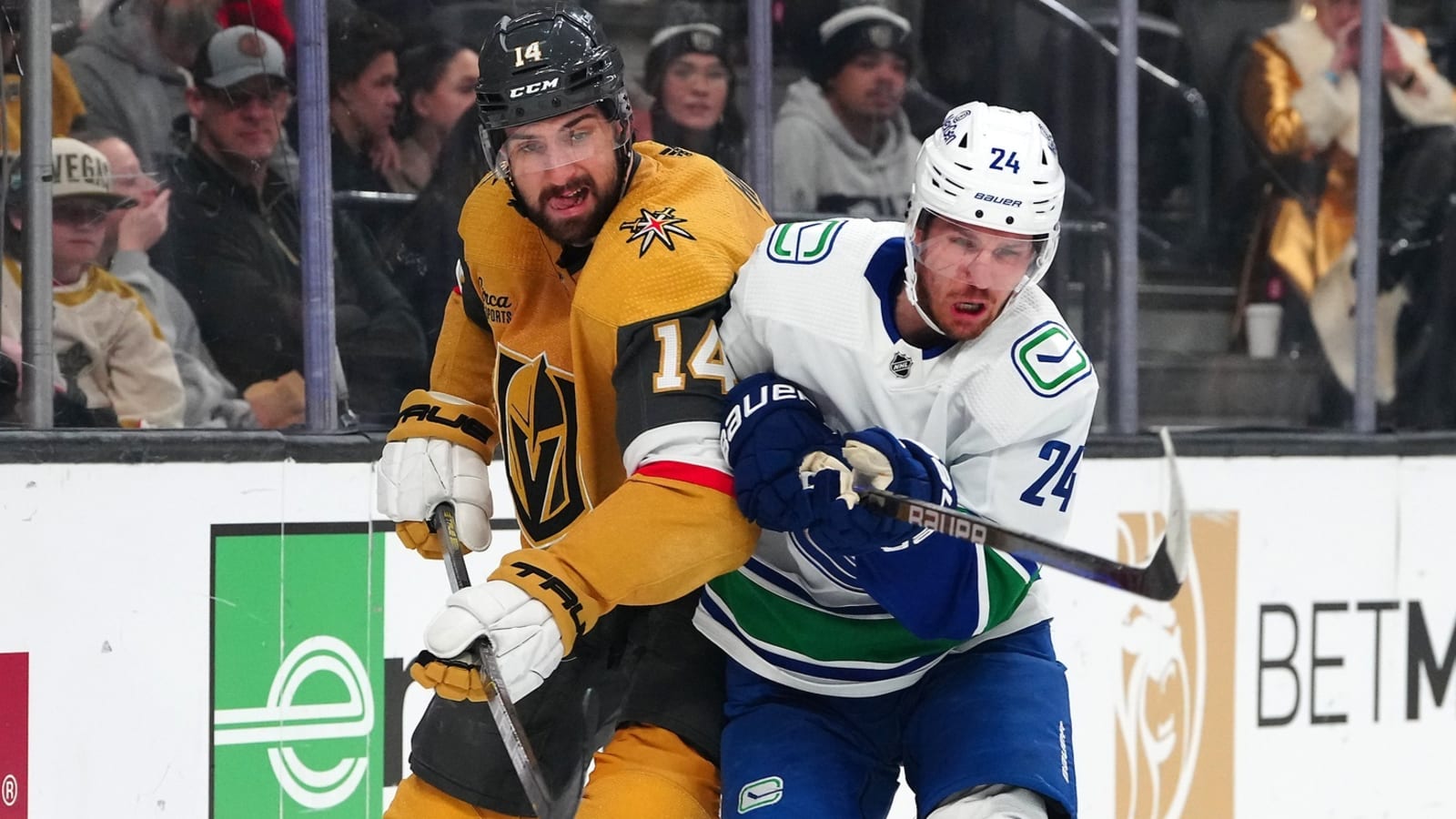
You know what’s a series that’s really worth following? Our own Dave Hall’s ongoing countdown of the Canucks’ top-20 prospects, which as of this writing has reached #5: Elias Pettersson.
It’s hard to read through Hall’s writeups and not come away feeling as though the prospect cupboard is as stocked as it has been in a long, long while. That, naturally, leads to thoughts about when these young, enterprising individuals might carve out a place for themselves on the main NHL roster. Which, in turn, leads to questions about the eventual departure of current players on the roster in order to accommodate the incoming youth.
Folks call it succession.
And it’s something that the Canucks are set up incredibly well for thanks to a slate of not just well-priced, but well-timed and -balanced contracts on the books.
The Athletic recently ranked the Canucks as having the fifth-most efficient set of contracts in the NHL, which is a nice feather in the cap of a franchise that spent the last decade ranked right near the bottom. But beyond the bang-for-buck, what the Canucks’ books have also been set up to offer is a series of well-timed exits for the old guard and potential entries for new blood.
Aside from a trade or two, the roster seems to be set for 2024/25. The Canucks won’t go into the season with any lingering contract negotiations to worry about.
Nor will they have to worry much at all throughout the year. Brock Boeser’s contract is the only major one expiring in 2025. Right there, we have a clear example of a built-in opportunity for succession. Say that Boeser takes a step back this oncoming season, and that a rookie like Jonathan Lekkerimäki really steps up. The Canucks would have an open opportunity to move on from Boeser and slide Lekkerimäki into that spot.
But that’s not particularly likely. After last playoff season, Boeser is generally considered to be part of the core, and GM Patrik Allvin and Co. have done a good job of locking their core down. Quinn Hughes, JT Miller, Elias Pettersson, Filip Hronek, and Jake DeBrusk are all signed for at least the next three seasons running. When we talk succession, we’re primarily talking about the pieces and places surrounding the core.
Also expiring in 2025, alongside Boeser, will be Pius Suter, Daniel Sprong, Phil di Giuseppe, Derek Forbort, Mark Friedman, and Noah Juulsen.
We don’t know much about how Sprong or Forbort are going to perform yet. But all of Suter, Di Giuseppe, Friedman, and Juulsen have all been positive contributors, to varying extents. No one is really aching to get rid of them at this time.
And yet, they each represent a future opportunity in their potential departure. The forwards in the system can look up at the two or three spots held by Suter, di Giuseppe, and Sprong this year and reason that, if they perform well enough, that spot can be theirs for 2025/26.
Same goes for any incoming defenders looking up the chart at Forbort, Friedman, and Juulsen.
The trend continues much the same for the summer of 2026. The Canucks will have one big negotiation to take care of that year, too, and it’ll be Thatcher Demko. Then again, depending on how Arturs Silovs develops between now and then, that succession plan might already be taken care of.
Beyond Demko, all of Conor Garland, Carson Soucy, Teddy Blueger, and the newly arrived trio of Danton Heinen, Kiefer Sherwood, and Vincent Desharnais are scheduled to become UFAs.
Which, again, is perfectly alright. Two years is the perfect amount of time to figure out if any of those new players are part of the long-term picture. It’s the perfect amount of time for someone like, for example, Aatu Raty to work his way toward stealing Blueger’s spot. All it really takes is a quick glance at the books on PuckPedia to literally see the succession plan come into view. A prospect like Raty spends one more year in Abbotsford, claims the spot vacated by Suter or Di Giuseppe next year, and then slides up the roster to claim Blueger’s role the year after.
It’s neat, it’s tidy, and it doesn’t require the dumping of any contracts.
Players like Garland and Soucy are a little trickier to figure out in this context. In the present day, both are important contributors, and they may continue to be well into the future. But Garland is 28, and Soucy is 30. When their contracts end, the Canucks will have the choice to sign them into their mid-30s or simply walk away. One can easily imagine a world in which a Pettersson II is ready to claim Soucy’s minutes by 2026, and where Lekkerimäki is ready to cover Garland’s level of production.
And, yes, we acknowledge that prospect development is non-linear and non-predictable, and that any name we’re using now is more-or-less a placeholder. But that’s where that prospect depth we talked about in the opening comes through. The more prospects a team has in its cupboard, the better chance that one of them hits. The Canucks don’t need all their prospects to hit. Just enough to cover the departures as they come.
We’ll end our future-gazing tour in the summer of 2027. That year will bring with it the toughest negotiation of all, as a 27-year-old Hughes signs what will almost certainly be the most expensive contract in franchise history. But the only other contract currently set to expire that same summer is that of Tyler Myers.
Thus, by July 1, 2027, the Canucks will have seen the end of current contracts for all of Boeser, Demko, and Hughes, but also of Garland, Heinen, Blueger, Suter, Sherwood, Sprong, Di Giuseppe, Soucy, Myers, Desharnais, Forbort, and Juulsen. And that’s to say nothing of those players still currently tied up in RFA eligibility, like Nils Höglander or Vasily Podkolzin.
The only players currently signed beyond that date are Pettersson, Miller, Hronek, DeBrusk, and Dakota Joshua. Which is a pretty fine collection of players to be committed to.
The succession plan is wide open and ongoing. And, of course, if prospects don’t develop and aren’t ready in time, the Canucks will always have the option of supplementing their roster through re-signings, new signings, and trades, as they’ve already proven quite apt at doing.
What we’re presenting here is not rocket science. It’s as simple as paying a team’s core players in both salary and term, and then holding the line on reasonable deals for everything else. It’s a philosophy that led directly to the team parting ways with Nikita Zadorov this offseason, rather than overpaying him for a depth role, but most can already see that this was the right decision.
In many ways, what the Canucks and their fans are receiving now is the kind of GMing they’ve been begging for for years. Why does this book of reasonably-lengthed contracts and future flexibility look so unusual?
Because it contrasts so sharply with what came before. Four year deals used to be handed out to the likes of Antoine Roussel, Jay Beagle, Micheal Ferland, and Tucker Poolman. Three year deals used to go to the likes of Sam Gagner and Jason Dickinson.
The new regime has avoided, Ilya Mikheyev aside, any sizeable contracts for non-key players thus far. And as a direct result, the franchise is in better shape both now and well into the future.
It’s a succession plan that even Logan Roy could be proud of. Or not. We’re not sure, we’ve never watched the show.
